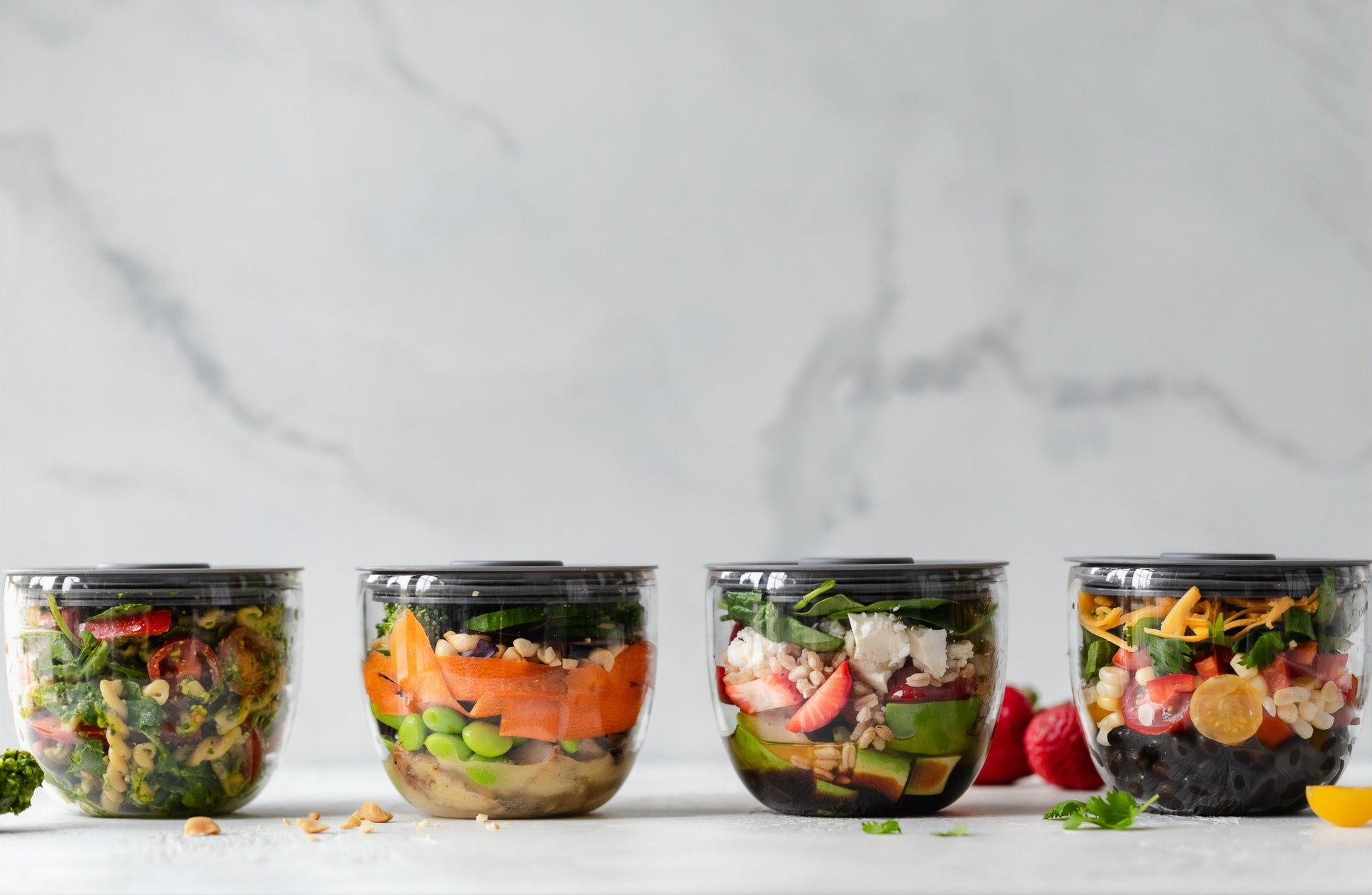It’s no surprise that healthy eating has a positive impact on health. From reducing long-term health risks to managing or minimizing medical conditions, or just maintaining physiological function, food is a form of medicine.
For entrepreneurs or those who work in startups, supporting your health through food is absolutely a tool to use to your advantage, especially in light of long hours at your desk or the stress of getting your venture off the ground.
But eating healthy often has connotations of committing time, energy, and money — three resources in short supply for those launching a product, service, or company.
With the tips below, you’ll be equipped to fuel your body and mind to support your innovation mission.
Plan for success
Just like when we’re thinking about setting up for success on the business front, we want to spend a little bit of time setting up for success on the nutrition front as well.
It may be helpful to think about creating a nutritional system instead of trying to implement a strict diet. Here’s the difference: Good systems continue to function and unforeseen circumstances without placing additional pressure on us, whereas diets often fail because they make unrealistic, unsustainable demands on our lives.
Here’s how we can tap into the power of systems when we’re thinking about our food.
Identify the strong/weak spots
If you’re already fairly tuned into your eating habits, you may not need to spend time here. But thinking about the point at which our resolve to fuel well fails can help us spot (and then root out) issues like emotional eating, low value cravings, or just lack of knowledge about what to eat. Start paying attention to when, where, and why you choose less healthy options, and you’ll be setting yourself up for a successful change in behavior.
Make it easy to choose health-supporting options
The next step is to make it as easy as possible for you to eat in ways that support your health objectives. There are a million and one tactics that fall into this (keep reading for some of ours), but the important thing is to make very effective changes that give you no reason not to eat well.
This could include:
-
Keeping healthy options close at hand by setting some physically near you
-
Prepping a few days’ worth of healthy eats in advance
-
Pre-portioning snacks and meals to cut down on over-snacking or under-fueling
-
Stocking up on healthier items that you actually take pleasure in eating instead of things you think you “should” eat
Make it harder to make choices that aren’t supportive of your health
The alternative to making it easy to eat healthier is to make it hard to eat poorly. While it’s generally better to encourage healthy eating through positive changes, like above, sometimes making things easy isn’t the best way through.
For example:
-
Don’t keep around foods you want to avoid. Either don’t buy them at all, or store them in harder to reach places. As they say, “out of sight, out of mind”
-
Disconnect from autopay on delivery/takeout apps and websites to discourage yourself from placing autopilot orders
-
Put skin in the game by setting and sharing a goal, finding an accountability partner, or creating a prize for successfully adopting new healthier habits
Shopping for your health goals
When it comes to healthy eating purchases, it’s easy to get bogged down by the details of whatever meal plan or program you’re on. Here are some suggestions to help cut through the noise of all the choices you may be confronted with when you head out to stock up.
Act local, go seasonal
There are a lot of reasons to act locally when it comes to purchasing food: the environment, the economy, the convenience. Eating locally also has physical and psychological benefits. Locally grown fruits and vegetables are likely to be fresher at the time of purchase, having less time traveling to the store or farmer’s market and more time growing. Thus, fresher produce is typically more flavorful and nutrient dense — and doesn’t spoil as quickly, another bonus for busy people who could benefit from those greens lasting longer in the fridge. By supporting your local food systems, you’re also engaging and connecting with your community and boosting your local economy.
Have a (flexible) list
By knowing ahead of time what you plan to buy, you’re less likely to make habit or craving-based decisions. But keep in mind that, depending on when you can shop (time of day, day of the week, store you have access to), you may not always be able to get everything on your list. So it’s a good idea to have a sense of what you can swap out with.
For example:
-
No fresh spinach? Opt for kale, arugula, or frozen spinach
-
Egg alternatives for baking include applesauce, bananas, flax and more
Spend some time researching substitutes to your go-to grocery items or for new items you’re getting for a recipe. Write these down somewhere easily accessible so you can pivot while shopping if need be.
Try subscription/delivery services
While not inexpensive, there is a booming grocery delivery market for foodstuffs. From CSA produce boxes to prepped meal kits, there are more options than ever before for those who are able to pay extra and save time.
It’s also a great way to try out a different style of eating by taking some of the legwork out of the way — like trying vegetarian meals or introducing plant-based options. Many of these options also have varying amounts of food delivered, with options to freeze or stop service on a monthly, weekly, or biweekly basis.
While some of the best-known delivery services ship nation-wide, there are also locally-based options that source from smaller-scale and local farmers and producers.
Examples in the Boston area, where CIC is headquartered, include:
Once again, local options typically means fresher, more nutrient-packed and delicious food with the added benefit of stimulating your local economy. Do an internet search for meal delivery services in your city or region, or visit a local farmer’s market, where these services will likely have a table with information.
Keep in mind that, due to the COVID-19 pandemic, many more local farms that run CSA (community-supported agriculture) programs are now offering delivery services now too. This added level of service makes it even more convenient to fit fresh, healthy eating into your busy lifestyle.
Additional Reading & Resources:
https://www.hsph.harvard.edu/nutritionsource/
https://thriveglobal.com/stories/the-entrepreneurial-diet/
https://www.hhs.gov/fitness/resource-center/nutrition-resources/index.html
Want to talk more about food? Join WorkWell @ CIC every Friday in June from 12–12:30pm EST for a free digital meetup about getting creative in the kitchen during COVID-19. This informal gathering covers a lot of ground — from recipe and ingredient swaps to making pantry staples stretch to sustainable kitchen practices and zero waste. Come for five minutes or stay the whole time!






